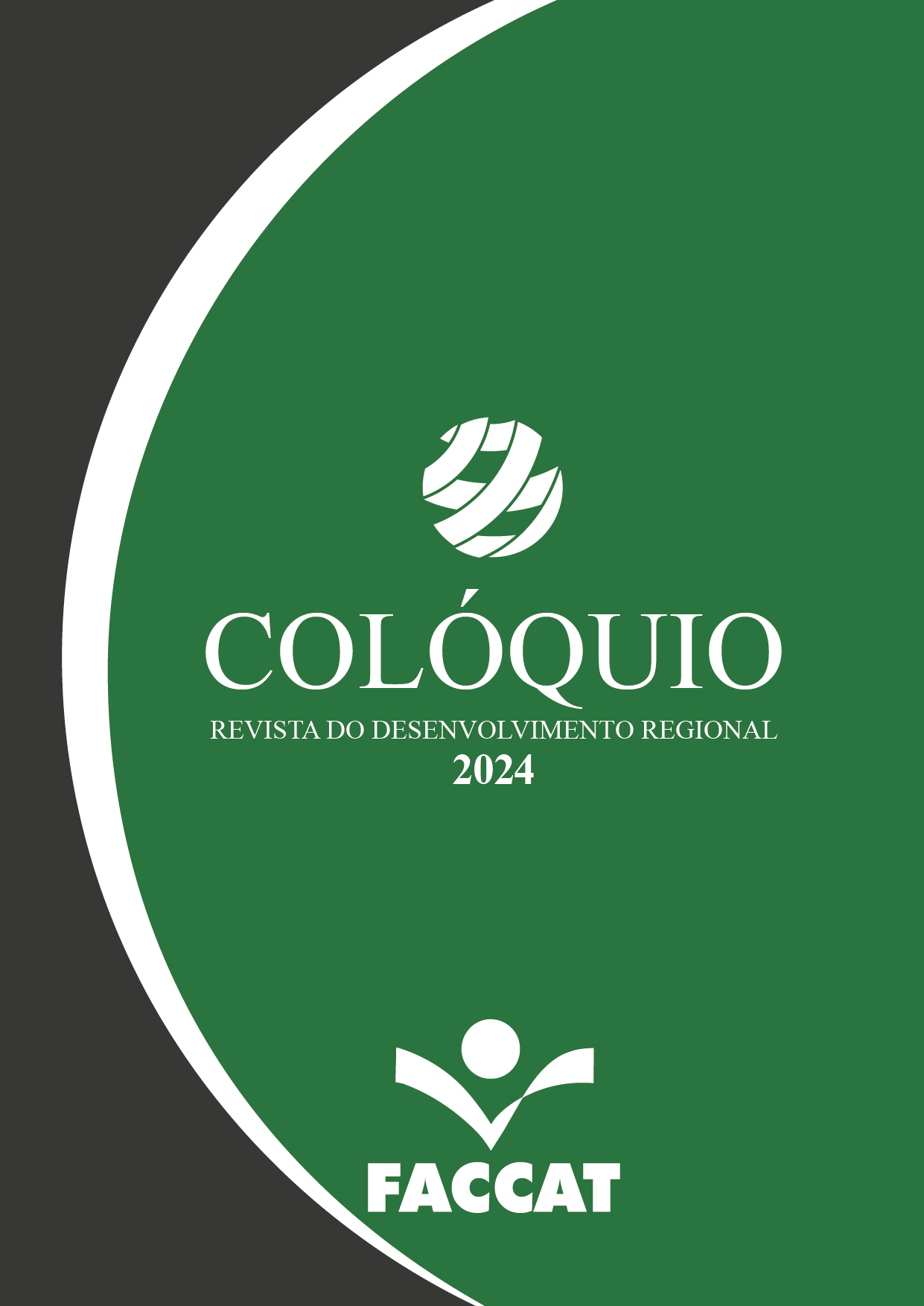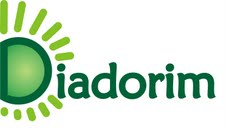Innovative performance influenced by organizational isomorphism in the Local Production Arrangement (LPA) of Clothing Manufacturers in Taquaral de Goiás/GO.
DOI:
https://doi.org/10.26767/coloquio.2120242.3260Keywords:
: local productive arrangement (LPA), search for knowledge, innovative performance, organizational isomorphism, mixed methodAbstract
In Brazil, Local Productive Arrangements (LPAs) make up public policy to support business clusters with significant development potential, thus, this study deals with these productive agglomerations and their relationships with organizational innovation with the objective of analyzing the occurrence of organizational isomorphism and the search for knowledge among companies participating in the LPA of Clothing Manufacturers in Taquaral de Goiás, State of Goiás, observing the effects of these elements on the innovative performance of the LPA. The research used a mixed method, of the explanatory sequential type, and generated a representation of the processes of isomorphism and search for knowledge. In the initial quantitative stage of the study, a questionnaire was applied, based on an existing scale. Next, a qualitative stage was carried out, which aimed to expand the results by identifying exploratory and exploitative sources of knowledge. The phenomena effectively identified were mimetic isomorphism and the search for exploitative knowledge. The search for exploratory knowledge was less intense. Both categories of knowledge search influenced the innovative performance of the APL. Social networks and other companies in the group stood out as sources of knowledge/imitation and, despite companies showing a lot of willingness to practice normative isomorphism and carry out the search for exploratory knowledge, these processes occur at a lower intensity. Although the focus was on an LPA of great relevance to that region, as it is a single LPA, this is a limitation of this study, although it can be applied or expanded to other arrangements.
References
ALVARENGA, R. A. M.; MATOS, F. R. N.; MACHADO, D. Q.; SOBREIRA, M. C.; MATOS, L. B. S. Arranjo produtivo local e desenvolvimento sustentável: Uma relação sinérgica no município de Marco (CE). Revista de Administração Mackenzie, 14(5), 15-43, 2013. https://doi.org/10.1590/S1678-69712013000500002.
ALVESSON, M. e SPICER, A. Neo-Institutional Theory and Organization Studies: A Mid-Life Crisis? Organization Studies, Vol. 40(2) 199–218, 2019. https://doi.org/10.1177/0170840618772610.
BATTILANA, J.; LECA, B.; BOXENBAUM, E. How actors change institutions: Toward a theory of institutional entrepreneurship. Academy of Management Annals, 3, 65–107, 2009. https://doi.org/10.5465/19416520903053598.
BERGSGARD, N. A.; NODLAND, S. I. Open Tenders in Public Procurement of Welfare Services: Professionalization, Standardization, and Innovation among Civil Sector Providers. Journal of Civil Society, 56(1), p.1-14, 2020. https://doi.org/10.1080/17448689.2020.1827810.
CARROL, M. C.; ZELLER, M.C. The cognitive limits to economic cluster formation. Urbani Izziv, 23(Suppl.1), p. 553-562, 2012. doi:10.5379/urbani-izziv-en-2012-23-supplement-1-005.
CASANUEVA, C.; CASTRO, I.; GÁLAN, J. L. Informational networks and innovation in mature industrial clusters. Journal of Business Research, 66(5), p. 603-613, 2013. https://doi.org/10.1016/j.jbusres.2012.02.043.
CASTRO, S. D. Dinâmica Produtiva e Inovativa do APL de confecções da região de Jaraguá - GO. In: LASTRES, H. M. M.; CASSIOLATO, J. E. Estratégias para o desenvolvimento: um enfoque sobre arranjos produtivos locais do Norte, Nordeste e Centro-Oeste brasileiros. 1ª ed. Rio de Janeiro: e-papers, 2006.
COSTA, W. P. Arranjo produtivo local como instrumento de política no desenvolvimento do Estado de Goiás (2002-2008). Dissertação (Mestrado) – Pontifícia Universidade Católica de Goiás, 2011. https://tede2.pucgoias.edu.br/
DELGADO, M.; PORTER, M. E.; STERN, S. Defining clusters of related industries. Working Paper 20375. Cambridge: National Bureau of Economic Research, 2014. Recuperado de https://bit.ly/3azkpGE.
DIMAGGIO, P.J. AND POWELL, W.W., The iron cage revisited institutional isomorphism and collective rationality organizational fields. American Sociological Review, v. 48, n. 2, pp.147-160, 1983.
DIMAGGIO, P. J.; POWELL, W. W. Introduction. In P. J. DiMaggio & W. W. Powell (Eds.), The new institutionalism in organizational analysis. Chicago: University of Chicago Press, pp. 1–39, 1991 https://books.google.com.br/books?hl=pt-BR&lr=&id=jbTbAgAAQBAJ&oi=fnd&pg=PR5&dq=The+new+institutionalism+in+organizational+analysis+(pp.1-39).+Chicago:+University+of+Chicago+Press.&ots=pEkjF8MicH&sig=H7yXzck44HS-MmF3MSRA0Yw0lHQ#v=onepage&q&f=false.
FORNELL, C.; LARCKER, D. F. Evaluating structural equation models with unobservable variables
and measurement error. Journal of Marketing Research, 18(1), 39–50, 1981. https://doi.org/10.2307/3151312.
GARCIA, R; MOTTA, F. G. E AMATO NETO, J. Uma Análise das Características Da Estrutura De Governança Em Sistemas Locais De Produção E Suas Relações Com A Cadeia Global. Gestão & Produção, v.11, n.3, p.343-354, set.-dez. 2004. https://www.scielo.br/j/gp/a/Y6WgkGc7TcZv6fP4bDvZr8b/?format=pdf&lang=pt.
GARUD, R.; JAIN, S.; KUMARASWAMY, A. Institutional entrepreneurship in the sponsorship of common technological standards: The case of Sun Microsystems and Java. Academy of Management Journal, 45, 196–214, 2002. http://digitalcommons.wcupa.edu/man_facpub.
HAIR, J. F.; SARSTEDT, M.; RINGLE, C. M. An assessment of the use of partial least squares structural equation modeling in marketing research. Journal of the Academy of Marketing Science, v. 40, p. 414-433. https://doi.org/10.1007/s11747-011-0261-6.
HAIR JR., J. F.; HULT, T. M.; RINGLE, C. M.; SARSTEDT, M. A. A primer on partial least squares structural equation modeling (PLS-SEM). Los Angeles: SAGE, 2016.
HARRISON, R. L.; REILLY, T. M.; E CRESWELl, J. W. Methodological Rigor in Mixed Methods: An Application in Management Studies. Journal of Mixed Methods Research, Vol. 14(4) 473–495, 2020. https://doi.org/10.1177/1558689819900585.
HENISZ, W.J.; DELIOS, A. Uncertainty, imitation, and plant location: Japanese multinational corporations, 1990–1996. Administrative Science Quarterly, 46, 443–475, 2001. http://dx.doi.org/10.2307/3094871.
HENSELER, J.; RINGLE, C. M.; SINKOVICS, R.R. The use of partial least squares path modeling in international marketing. Advances in International Marketing, v. 20, p. 277-319, 2009. https://doi.org/10.1108/S1474-7979(2009)0000020014.
INSTITUTO BRASILEIRO DE GEOGRAFIA E ESTATÍSTICA (IBGE). Pesquisa de Inovação Tecnológica: PINTEC 2017. Rio de Janeiro: IBGE, 2020.
KACHBA, Y. R.; HATAKEYAMA, K. Innovative strategies in cluster: obliquity for the development of fashion products. Produção, v. 23, n. 4, p. 751-761, out./dez, 2013. https://www.scielo.br/j/prod/a/L849kgGXSgcyxFPRQbZh45D/?lang=pt.
KILBOURNE, W. E.; BECKMANN, S. C.; THELEN, E. The role of the dominant social paradigm in environmental attitudes: a multinational examination. Journal of Business Research, v. 55, n.3, p. 193–204, 2002. https://doi.org/10.1016/S0148-2963(00)00141-7.
KOSKELA-HUOTARI, K.; VINK, J.; EDVARDSSON, B. The institutional turn in service research: taking stock and moving ahead. Journal of Services Marketing, 34 (3) p.373-387, 2020. https://doi.org/10.1108/JSM-02-2019-0101.
LASTRES, H. M. M.; CASSIOLATO, J. E. Glossário de arranjos e sistemas produtivos e inovativos locais. Rio de Janeiro, RJ: RedeSist, 2003. Recuperado de https://bit.ly/2MYaCl8.
LAWRENCE, T.; SUDDABY, R. Institutional work. In S. Clegg, C. Hardy, & T. Lawrence (Eds.), Handbook of organization studies (2nd ed.) (pp. 215–254). London: SAGE Publications, 2006.
MARCH, J.G. Exploration and exploitation in organizational learning, Organization Science, Vol. 2 No. 1, pp. 71-87. http://www.jstor.org/stable/2634940.
MARINI, M. J.; SILVA, C. L. Desenvolvimento regional e arranjos produtivos locais: Uma abordagem sob a ótica interdisciplinar. Revista Brasileira de Gestão e Desenvolvimento Regional, 8(2), p. 107-129, 2012. Recuperado de https://bit.ly/3rimmOm.
MEYER, J. W.; ROWAN, B. Institutionalized organizations: formal structure as myth and ceremony. In: Powell, W. W.; DiMaggio, P. J. (Eds.). The new institutionalism in organization analysis. Chicago: University of Chicago Press, 1991.
PEQUENAS EMPRESAS GRANDES NEGÓCIOS. Reportagem TV Globo, afiliada TV Anhanguera, 2012. Com 200 fábricas, Taquaral de Goiás é referência nacional em moda íntima. http://g1.globo.com/goias/noticia/2012/04/com-200-fabricas-taquaral-de-goias-e-referencia-nacional-em-moda-intima.html
POWELL, W. W., DIMAGGIO, P.J. (Eds). The New Institutionalism in Organizational Analysis, p. 41-62, Chicago: The University of Chicago Press, 1991. https://books.google.com.br/books?hl=pt-BR&lr=&id=jbTbAgAAQBAJ&oi=fnd&pg=PR5&dq=The+New+Institutionalism+in+Organizational+Analysis+(pp.+41-62).+Chicago:+The+University+of+Chicago+Press.&ots=pEkjF8Mm8I&sig=74gC_EYt6517cAriRPNIZZ_gy-U#v=onepage&q=The%20New%20Institutionalism%20in%20Organizational%20Analysis%20(pp.%2041-62).%20Chicago%3A%20The%20University%20of%20Chicago%20Press.&f=false
QUINELLO, R. A teoria institucional aplicada à administração: entenda como o mundo invisível impacta na gestão dos negócios. São Paulo: Novatec, 2007.
RIVERA, J. Institutional pressures and voluntary environmental behavior in developing countries: Evidence from the Costa Rican hotel industry. Soc. Nat. Resour. 17, 779–797, 2004. https://doi.org/10.1080/08941920490493783.
SILVA, R. G.; MARTINELLI, D. P. Arranjos Produtivos Locais (APL) e Fatores Formadores das Dimensões do Desenvolvimento Local. Revista Organizações & Sociedade. 28(96), p. 9-34, 2021. https://doi.org/10.1590/1984-92302021v28n9601PT.
SUCHMAN, M. C. (1995). Managing legitimacy: Strategic and institutional approaches. Academy of Management Review, 20, 571–610.
THORNTON, P.; OCASIO, W.; LOUNSBURY, M. The institutional logics perspective: A new approach to culture, structure and process. Oxford: Oxford University Press, 2012.
ZHANG, H.; HU B. The effects of organizational isomorphism on innovation performance through knowledge search in industrial cluster, Chinese Management Studies, v.11. Issue: 2, p. 209-229, 2017. https://doi.org/10.1108/CMS-04-2016-0076.
ZHU, Q.; GENG, Y.; FUJITA, T.; HASHIMOTO, S. Green supply chain management in leading manufacturers Case studies in Japanese large companies. Management Research Review, v. 33, n. 4, p.380–392, 2010. https://doi.org/10.1108/01409171011030471.
WATSON, R.; WILSON, H. N.; SMART, P.; MACDONALD, E. K. Harnessing Difference: A Capability-Based Framework for Stakeholder Engagement in Environmental Innovation. Journal of Product Innovation Management, 35(2), p. 254-279, 2018. https://doi.org/10.1111/jpim.12394.
Westphal, J. D., Gulati, R., & Shortell, S. M. (1997). Customization or conformity? An institutional and network perspective on the content and consequences of TQM adoption. Administrative Science Quarterly, 42, 366–394. http://www.jstor.org/stable/2393924.











